In the wake of disasters
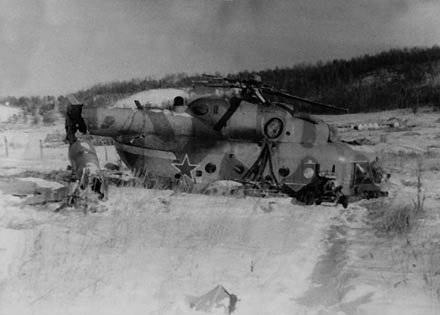
I guess it was written in my family to become a border guard. I was born on May 28, on the Day of the border guard, in the family of the border guard. But I, like all the boys of my generation, from childhood wanted to become an astronaut. However in aviation they didn’t accept me, because I have a small scar on my forehead - the doctors didn’t like it. The dream didn’t go anywhere, I decided to realize it on the other hand - I entered the Kazan Aviation Institute, the faculty of “aircraft engines”. At the same time, I chose the specialization “liquid propellant engines”, because I reasonably reasoned - where are the rockets, there is space!
After graduation, I was drafted into the army for two years - into the Strategic Missile Forces. Served well, my department was always among the first. As luck would have it, the command liked it, they wanted to leave me for an extra urgent. I refused, because, as a hereditary border guard, I wrote a report on the transfer of me to the Border Troops of the KGB of the USSR. It was in 1972.
After enrollment in the ranks of the border troops, I, as an engine specialist, wanted to send me near Leningrad - to do aerosleds. But then they were redirected to Alma-Ata, where the 10 th air regiment of the border troops was based. Upon arrival at the technical-operational unit (TEC) of the regiment, I introduced myself to my new chief, a major with a memorable surname Korzh. He immediately decided to test me for professional suitability. He pointed to the Mi-4 helicopter that was under repair:
- Change the engine on it, then - go.
I agreed, only asked to put another similar machine nearby - as a sample. The request has been fulfilled. They also gave me a crane and a couple of soldiers to remove and fix heavy parts. I spent a week with the replacement of the engine, delving into his device. At the end of the work, Korzh carefully checked the result of my work, found only one mistake and solemnly announced:
- Test passed!
So I got the "admission" and became a full-fledged TEC engineer. The work area was called the SVD group - airplanes, helicopters and engines. In common parlance, my subordinates called me Maslopup.
In the late seventies, he was promoted to captain ahead of schedule. My group worked as a well-established mechanism, everything worked out. Soon a proposal came to transfer to a new duty station - in Vorkuta, the head of the TEC.
Helicopters and airplanes of the Vorkuta regiment flew across the North — supplied border posts and outposts, controlled the Northern Sea Route. We traveled to the most remote corners, from Kanin Nos to Pevek. What is interesting: in the regiment, we have developed a method for flying to Franz Josef Land. First flew An-26, dropping over the islands on the route of the barrel of fuel. Then followed the helicopter. He sat down near the barrels, refueled and flew on.
Such long-distance flights were very difficult for the crews. At "points" border helicopters often used civilian air platforms fleet. Of course, GVF provided them according to the “residual” principle - neither normal power nor heating. The idea came to me - to make the border boards completely autonomous. I knew that once there was an Arctic version of the IL-14 - with stoves and electricity generators on board. I decided to equip our helicopters on the same principle. As a generator, I needed compact engines. There was a railway nearby. He agreed with the railroad workers, and they handed over to the regiment several such UD-25 engines from railway railcars. Engines and twenty-liter fuel tanks for them were installed in the aft of the helicopters. The stove, electric stove and electric boiler were also located there. As a result, the regiment’s helicopters became completely autonomous. They did not depend on local power supply, the crews themselves could cook food, and most importantly - the cars did not cool down at the points, which reduced the risk of technical failures.
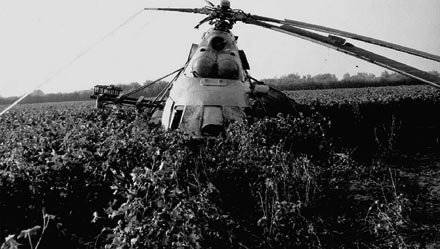
At first, the border helicopters were surprising - the car arrives at the “point”, and nobody leaves it. Only the navigator comes down to the aviation control tower, the documents will be signed and everything else, the rest are sitting inside. And what's inside the border board buzzing, frying, steaming?
It was possible to make a lot of effort and to improve safety. In the Arctic, there were places where there were no communications for four hundred kilometers and the so-called drives were located at a distance of up to five hundred kilometers from each other. Sometimes there was no communication with the crews for five to six hours, whereas under normal conditions, within half an hour after the loss of communication, it was supposed to begin search activities. Here everyone understood - the crew could only rely on themselves. Therefore, we installed astrocompasses for each car of the regiment. They especially helped out while flying over the ocean, where there are no landmarks at all.
So go to the KGB
In 1982, a new page of my biography began. I was transferred to Moscow, to the department responsible for flight safety. At that time, the Afghan events were already in full swing. Me and my colleagues were constantly sent to the Central Asian border region. There we monitored the observance of regulations, helped organize work in the field.
At that time there was an instruction - for officers, the term of a business trip is no more than forty-five days. In fact, it looked like this: you arrive from a business trip, change dirty clothes to clean clothes, get a new travel certificate and get back.
At some point, a nuisance happened - during the fighting, there were refusals when firing uncontrollable aircraft shells - NURSAMi. There was a case when they “didn’t get off”, stuck inside the starting blocks and exploded! The fact that at the same time there were no casualties and lost cars can be attributed to luck. A commission arrived from Moscow, which concluded that the airfield services of the border aviation regiments were to blame for the failures - they say that before equipment into the starting blocks from the NURS, they do not remove conservation. It was decided to investigate the situation at a meeting in Moscow. In fact, it was a public flogging. Arms Specialist refused to go, so as not to disgrace. They sent me as the youngest officer (I was a major then). Although I had nothing to do with weapons.
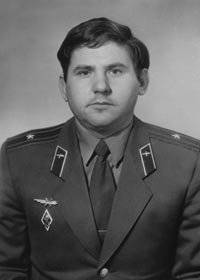 Arrived at CB Mil, to the meeting. There sat military representatives, leading engineers, many people in uniform with big stars. At the head - the main designer. He sits in the shade, so much so that he sees us all, and we his face does not. Only a leather jacket looks out of the shadows. I behaved modestly and tried not to stand out, expecting to receive a lot of unpleasant statements in my address. So it happened. Each of those present poured mud on me, saying that you, the military, do not know how to follow the equipment, and in general, such as you, nothing more difficult than a sledgehammer can not be trusted. When everyone spoke, the general designer of the enterprise offered to listen to the accused party.
Arrived at CB Mil, to the meeting. There sat military representatives, leading engineers, many people in uniform with big stars. At the head - the main designer. He sits in the shade, so much so that he sees us all, and we his face does not. Only a leather jacket looks out of the shadows. I behaved modestly and tried not to stand out, expecting to receive a lot of unpleasant statements in my address. So it happened. Each of those present poured mud on me, saying that you, the military, do not know how to follow the equipment, and in general, such as you, nothing more difficult than a sledgehammer can not be trusted. When everyone spoke, the general designer of the enterprise offered to listen to the accused party.I realized that I did not have to wait for mercy, so I decided to answer directly.
- There are really violations that you are talking about. Moreover, we break much more than you can imagine! We refuel helicopters on the move, without turning off the engines, which is prohibited. With the engines turned on, we equip them with rockets, which is strictly prohibited. But where does this happen? Behind the “river”, in absolutely unsuitable conditions, often under enemy fire. In two or three hundred meters there is a battle, and we equip the car!
I look - "leather jackets" and "big stars" have become silent. Then I decided to doge:
- you know us yours weapon not really what you need! Unreliable it! Vaughn Kalashnikov in any dust works. And the Makarov pistol works. And here - reopen, conserve, set targets, hang flags. A whole epic! Soldiers are waiting for air support, while we follow all the regulations. Let your representatives go with me to Afghanistan and show you how to properly equip and maintain these weapons directly under fire.
There was a long silence. The general designer came out of the shadows, walked back and forth around the office and finally said:
- You know, the major is right! Do not need our weapons in combat conditions. You, Comrade Major, go in my car to the airfield, and we'll all sit here. We will sit until we figure out how to fix the problem.
DETAILS PRICE LIFE
One of the areas of work of my department was the investigation of flight accidents. During the war in Afghanistan, of course, there were quite a few of them. I especially remember the state of emergency that occurred in the Dushanbe air regiment. There, right on the takeoff site of the airfield, the Mi-8 MT crashed and burned. The car was brand new - what happened to it? Began to find out the circumstances of the disaster. It turns out that a commission from the okrug arrived at the regiment that day. Its representatives declared the regiment anxious. All that was required of the pilots was to reach their vehicles, prepare the equipment for take-off, start the engines and, without rising into the air, report on the readiness of the dispatcher. It seems simple.
At the crash site of the car - one huge black spot. Only one bell gear and gearboxes survived. According to eyewitnesses, during the training alarm the car lifted, then made a small circle, crashed into the ground and flared. Immediately, individual chiefs "offered" me the basic version - the plant that left the car was to blame. But our commission had a different version: the crew made a mistake when checking the hydraulic system of the helicopter and was also not fastened. It was clear from the fact that during the fall of the car centrifugal force threw the crew members out of the cab. First, the flight engineer flew to the concrete, then the right pilot, followed by the left ...
Examination of burnt debris gave nothing. Objective control devices also burned. However, when the car was already burning, one of the soldiers managed to snatch from the fire a small piece of the flight recorder film. There were few hopes for this piece of celluloid, and yet we decided to try to study it. As it turned out later, this piece of film confirmed the initial assumptions of the commission.
Data from the film showed that both hydraulic systems were disconnected from the machine. This was a key point for investigation.
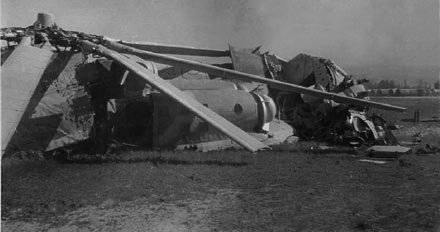
Gradually, the picture began to take shape. The pilots, hearing the alarm, rushed to the helicopter. However, they forgot the key to the car. For him sent ensign - flight mechanic. He stayed alive. Reaching the helicopter, the crew took their places, but did not fasten. In this case, the pilots talked a lot out of business, distracted from what is happening. What happened was that the crew checked the equipment, alternately pressing the necessary toggle switches and buttons, and then turning them off. In addition to one button - the one that blocks the hydraulic system of the helicopter, the main and backup. In this case, the blades of the helicopter of the helicopter, trying to come to an equilibrium state, were set at a positive angle of attack. If the hydraulic systems were included, this would not have happened. And so there was a thrust on the screw, and he dragged the car into the air.
The mechanic, when he returned with the key, saw that the car was hanging in the air, while swaying strangely. At this moment inside the car there was a struggle for life. Pilots hung on the controls, trying to lower the car. But without hydraulic systems, this requires a lot of effort. But it could not be created, because the pilots were not fastened. They simply had nothing to rest on! Moreover, the centrifugal force literally threw the crew out of the cabin onto the concrete, after which the car fell and flared.
When I was about to return to Moscow, representatives of the local command found me, put me in a car, and immediately drove them to management. It turns out that the Mi-26 just crashed in the Moscow frontier detachment.
It happened in the morning when the whole detachment was on the parade ground, on the line. At the huge machine the tail screw suddenly refused, it began to fall rapidly. The car was driven by the crew of the pilot Pomytkin. He managed to divert the helicopter over the territory of the detachment, where he crashed to the ground. One crew member then died.
As part of the commission, I went to the Moscow squad. The Mi-26 helicopter at that time was absolutely new. Moreover, the specifically crashed flight unit was a pre-production model, the first in the Union to enter service. This sample was not even collected on the conveyor, but by hand, the so-called selective assembly. It cost twice as much as the production model. The helicopter entered the Dushanbe air regiment in 1983, and for a long time underwent extensive tests.
Almost from the very beginning of the investigation, it became clear that the tail rotor gearbox had disconnected from the main gearbox BP-26. Representatives of the manufacturer and Mil Design Bureau, as well as the Air Force flying laboratory, were connected to the investigation. The chief engineer of the factory arrived with the workers. He offered to take the gearbox of a fallen helicopter to Moscow and there already to understand - what is wrong with him. I insisted that the gearbox remained in the village of Moscow. Moreover, he asked General Vertelko, who headed the commission to investigate the catastrophe, to put a cordon around the unfortunate gearbox.
By analyzing the catastrophe, we came to the preliminary conclusion that the catastrophe could have occurred because of the absence of two retaining rings in the gearbox. Without rings, the gearbox shaft from vibration began to gradually get out of engagement with gears. The process was long - while the helicopter flew. When the shaft finally broke the chain, a huge colossus collapsed.
To confirm the hypothesis, the reducer was completely disassembled by representatives of the plant. Next to the gear was constantly responsible officer. For the purity of the experiment, he forced the workers to roll up their sleeves and even take off their watches so that there was nothing in their hands.
The manufacturer, more precisely, the young receptionist, who had not followed the absence of a pair of small parts that killed the largest helicopter in the world, was found guilty. To the frontier troops, in return for the crashed Mi-26, the plant delivered a new car for free.
According to the results of the investigation, I wrote a multi-page report in which I pointed out the shortcomings of the new car. I especially noted that it is unacceptable to transport a large number of personnel in the Mi-26, since when the wall of the cargo compartment falls, the masses of the multi-ton engines located above it cannot stand. The designers, on the other hand, dreamed of cramming the second deck into the Mi-26 in order to transport right up to the 300 man!
RISK IS JUSTIFIED AND ... UNJUSTIFIED
Later I had to investigate the catastrophes and accidents of almost all aircraft of the border troops of the KGB of the USSR. Of course, the lion’s share was associated with the war in Afghanistan. Once another helicopter crashed. The car flew at a very low altitude, caught on the ground and collapsed flat. In this case, the starting blocks were fully equipped with ammunition - unguided projectiles. Not that exploring the car - to approach her was dangerous! But there is nothing to do - you need to work. Senior miner was rather lazy. He took off several shells and blew them up with a thick sword. It turned out pretty decent pit. They put the remaining NURSY - no less than 192 projectile. In the same pit the miner left all the remaining tol. I think: he is an expert, he knows what he is doing. Blew the shells. What started here! From the explosion of rocket shells scattered in all directions. Miraculously, everyone remained alive.
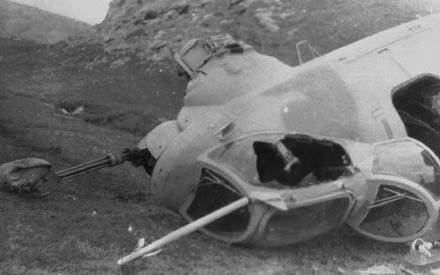
In general, work in Afghanistan was often associated with a risk to life. I remember, we flew with a commission to the DRA for a catastrophe. The helicopter fell. It smeared be healthy - four hundred meters.
Landing at the crash site, and there is a battle nearby. The commission is met by a lieutenant:
- How much time do you need to investigate?
The answer is:
- By the order laid fifteen days.
- Fifteen days I can not - Dushmans attack. I can last a maximum of two hours. Take the tank and proceed.
I sat in the tank and drove along the crash site. Along the way, I noted the location of the parts of the crashed car, but the main thing was the serifs from the screw, that is, those places where its blades beat to the ground. Of great importance is also the appearance of the blades of the crashed car, their bend, as well as many other details that are almost imperceptible to outsiders, allowing them to accurately determine how, when, and why the crash occurred.
I learned the art of conducting the investigation (otherwise you can say) gradually. After all, a school of investigators specializing in air crashes does not exist. The main ones were personal experience, theoretical and practical knowledge, and at the same time - flair, intuition, something that you cannot learn in any school.
Gradually, it was possible to very accurately model the development of disasters. There were no computers for modeling. I had to rely on paper and in my own head. Once in Afghanistan, Mi-24 was lost. Almost immediately, I suggested that a technical hole in one of the units of the aggregates was clogged. Reversed, and exactly - exactly in the predicted place a blockage. Very small, but because of him lost the car.
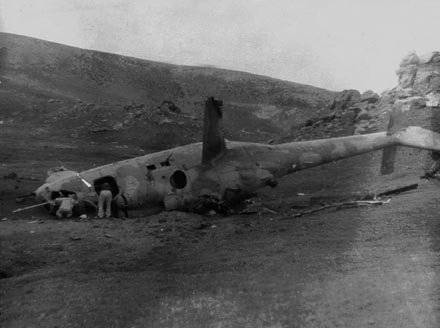
Although, of course, the main cause of most accidents were not technical problems, but the carelessness of the crew and support staff. The confirmation was one case that I investigated during the war in Afghanistan. One of the crews flew from the airfield in Marakh to the sanzadanie and “behind the river” disappeared. Found a place to fall. And there are only small bits, the size of no more than a palm. It is clear - the helicopter exploded when it fell. At the same time, when inspecting the site of the fall, they found a whole bottle of champagne.
We find out that on the eve there was a booze. Helicopter refueled somehow. He simply did not have enough fuel - he fell with empty tanks. And when the car falls with empty tanks, an explosion occurs such that it will not find it! This is scary.
In support of my hypothesis, I conducted a series of experiments. Their goal was to prove that the helicopter was not fueled. They calculated how much the car flew by, at what speed, when the fuel ran out, how long it traveled with dry tanks, from what height it fell ... And that very bottle of champagne I put on the spot where the crew died. As a reminder.
WRITTEN BY BLOOD
Due to the neglect of safety standards, flights ended sadly not only in Afghanistan, but also in a completely peaceful environment. I had to investigate the disaster near Odessa. It was like this: the crew arrived from Afghanistan. Such combat guys. Crew attracted for demonstration flights. The flight is simple, for three minutes. It was necessary to take off with a dress of border guards and a dog from the Pionersky airfield, near Odessa, fly over the Kuyalnitsky estuary to the training outpost, and parachute the outfit there. The pilots decided to show the class - to fly low over the water, then soar abruptly over the coast and effectively disembark.
As luck would have it, that day on the estuary there was an ideal mirror surface, without ripples and waves. Flying over such a surface has its own characteristics. Due to the absence of ripples on the water, the pilot is not always able to accurately determine the height. The water and the sky seem to merge. Here come to the fore devices. But the barometric altimeter is tuned to the airfield from which the crew is taking off. It remains a radio altimeter, which the crew did not turn on. It turned out that the crew was flying, relying on the usual altimeter, which showed a height of fifty meters. At some point, the flight mechanic (he survived) looked down — and the water was right under the belly of the car! And the crew sits quietly.
The helicopter at full speed hit the water. Nothing worse than a blow to the water, I have not seen for my practice. The car instantly collapsed to the tenth frame. When I examined the moment of the collision with water, I was amazed - how changeable is fate. Who was sitting in the cargo compartment in the same position, the water carried through the demolished rear flaps to the outside. Who was sitting in a different position - that one smeared on frames.
When rescuers came to the rescue, they saw a gloomy picture. Broken helicopter in the water. Half of the border guards aboard him died. Above the place where the conductor died, the dog swam for a long time - everything was looking for the deceased owner.
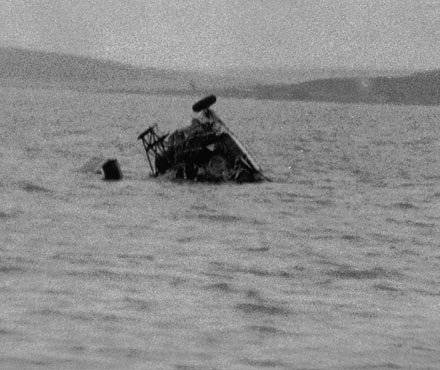
Many are wondering - what exactly gives the establishment of the true causes of a catastrophe? Once again I repeat the old truth - flight instructions are written in blood! According to the results of the investigations, it was largely possible to improve flight safety: change the instructions, improve the design of the aircraft.
In total, I took part in the investigation of the catastrophes of fifty-six cars. Only three cars were lost due to technical reasons. Five - downed fire impact from the ground. The rest is the human factor. I am deeply convinced that domestically produced aircraft, especially Mi helicopters, Tu airplanes are the most reliable vehicles.
Information